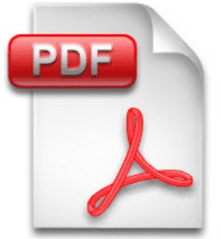However, before you start a new document, you can try to retrieve the Word document. Here’s how you can recover those unsaved Word documents from your computer.
Search For the Original Document in the Start Menu
This is the first action you should take when you lose your Word document. The steps are quite simple: Step 1: On the Windows Search bar, type the name of the document and press Enter. Step 2: If the results show the file in the documents list, double-click on it and it will open in Word.
Search For the .WBK or .ASD Extension
A file with a .WBK extension is a Word backup, while a .ASD extension represents an autosaved file. You can search if your Word file has a backup or autosaved copy using the steps below: Step 1: Within the Windows search bar, type. wbk or .asd and tap on the Enter key. Step 2: Check the search results to see if you have any files represented this way:
Backup copy: Backup of + Name of the missing file.Autosaved file: .asd extension.
Step 3: Double-click the file name to open it. It is important to note that for a Word file to have a .wbk extension, you must have the backup copy function enabled in Word. Here’s how to check if the function is enabled: Step 1: Launch Word. Step 2: Click on File. Step 3: Select Options. Step 4: Click on Advanced. Step 5: Scroll down to the menu titled Save and ensure you tick the box with the statement Always create a backup copy. Step 6: Select OK to save changes.
Using the Task Manager
You can use the Task Manager on Windows to recover an unsaved file. However, this requires ending every Word-related process and restarting Word. Here’s how it works: Step 1: Launch Task Manager Step 2: Click on the Processes tab. Step 3: Under the apps section, check for Microsoft Word. If the app is displayed, right-click and select End Task. Step 4: Under the background processes section, check for Word-related processes. If a process is displayed, right-click and select End Task. Step 5: Close the Task Manager. Step 6: Launch Word again to check if the missing file is displayed under the Document Recovery pane. This pane is lodged to the left of the Word window. Step 7: If there are files in the recovery pane, double-click on them to open.
Search for Temporary Files
Another way to locate unsaved or corrupt Word documents is by searching for temporary files. Such files bear the .tmp extension. Here’s how to locate temporary files on our desktop: Step 1: Within the Windows search bar, type .tmp or ~ then tap on the Enter button. Step 2: Click the Documents tab. Step 3: Scroll through the search results list. Do this to locate the names of files that correspond with the recent dates and times you worked on the document. Step 4: If you identify the file, launch Word and click on the File tab. Step 5: Click on Open and select the Folders tab. Step 6: Navigate to the location of the .tmp file that you found earlier and select it to open the file.
Use the Manage Documents Feature on Microsoft Word
Word has a feature named Manage Document which can be used to recover unsaved files. Here’s how it works: Step 1: Launch Word Step 2: Select the File tab on the Ribbon. Step 3: Select Info. Step 4: Select Manage Documents. Step 5: Select Recover Unsaved Documents.
Search the Recycle Bin
If a file was accidentally deleted, it can be recovered if the Recycle Bin has not been emptied. Here’s how to do so: Step 1: Launch Recycle Bin. Step 2: Search through the list of documents for the file name. Step 3: If you locate the file, right-click and select Restore.
Using Microsoft Windows Recovery Tool
If you’ve forgotten to save your Word document, you should be able to locate your unsaved Word document using any of the methods described above. However, if you accidentally delete a file and it is not in the Recycle Bin, you can use the Microsoft Windows Recovery Tool to restore it. The above article may contain affiliate links which help support Guiding Tech. However, it does not affect our editorial integrity. The content remains unbiased and authentic.




































